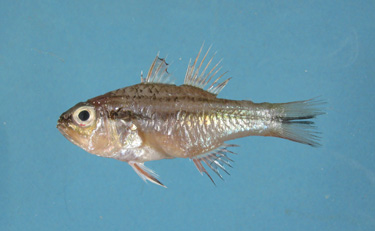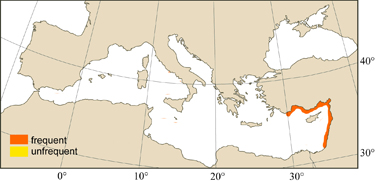
|
Relevant synonyms Meristic formula |
|
| photo: Daniel Golani |
|
SHORT
DESCRIPTION
|
DISTINGUISHING CHARACTERISTICS Teraponidae: single dorsal fin (although with deep notch between the spines and rays portion in some species); two flat spines on the operculum. BIOLOGY / ECOLOGY
habitat : during the day among corals and rocks, at night found in shallow open areas near soft substrate to depth of 50 m. |
|
1st
MEDITERRANEAN RECORD
|

|
|
DISTRIBUTION
|
ESTABLISHMENT SUCCESS
|
|
|
MODE OF
INTRODUCTION |
IMPORTANCE TO
HUMANS |
|
KEY REFERENCES
|
|
|
 Apogon fasciatus
Apogon fasciatus